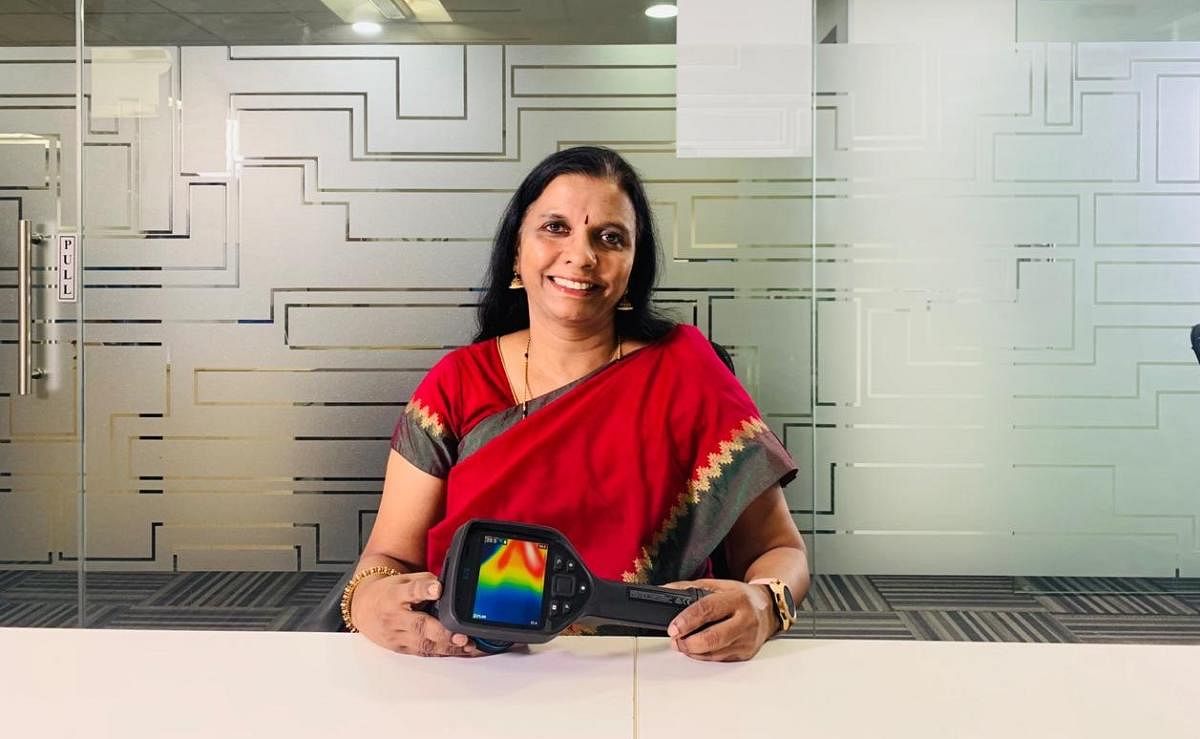
The survival rate of breast cancer patients in India is 66.1%, way behind America and Australia’s 90% mark. Low awareness, late screening, and delayed treatment are the major reasons for this gap. But a startup from Bengaluru is trying to close this gap by making the screening process painless, cheaper, and more accessible.
Niramai’s technology requires women to sit three feet away from a thermal sensing device, which then uploads data to the cloud for AI-driven analysis and gives the result in 15 minutes. Mammography, on the other hand, requires your breasts to be pressed between two plates for X-ray imaging. Women find the latter uncomfortable, and at Rs3,000-3,500 per test, it’s also double the cost of a Niramai examination, which has shown over 90% accuracy.
And so, Niramai’s no-pain, no-radiation tech is being seen as a game-changer in the early detection of breast cancer. It’s called Thermalytix. It’s won 22 international patents. It has been deployed in hospitals and diagnostic centres in 14 Indian cities. It has screened 36,000 women and detected abnormalities in over 2,000 of them. Internationally, it was labelled “as a major advance in technology” by a radiologist at the San Antonio Breast Cancer Symposium in 2019. Most recently, the Philippines government had invited the team for a virtual showcase of their tech, Metrolife was told.
However, the biggest draw of Thermalytix is that it can detect breast cancer in younger women and, thus, prompt early treatment, says its founder Geetha Manjunath.
Breast imaging specialist Dr Sudhakar sees promise in Thermalytix and operates it alongside the mammography machine at city-based HCG Hospital. “A decade ago, we would mostly see breast cancer in post-menopausal women, who were in their 50s and 60s. Now, we see that peak between 30 and 40 years.
The problem is that breasts in this age cohort are usually denser, because of which, mammography can’t detect small lesions and early signs of cancer.” Thermography is also safe to do on pregnant women as it’s free of radiation, he points out.
The late detection of breast cancer can devastate families and Manjunath knows this well. She lost two of her cousins to breast cancer in 2016. They were in their 40s.
“I was heading an AI lab for a big company then and it got me thinking, there should be a technological solution to improve breast screening,” recalls the computer science engineer and researcher, who then quit her high-profile job to build Thermalytix.
How receptive has the medical fraternity been to her tech? “Even today, doctors ask us to give a demo in their hospital and we understand. But many have realised that it’s far cheaper than a mammography machine (Rs8lakh v/s Rs80 lakh) and delivers higher accuracy, by 10%,” she shares.
On that, it’s a portable device that requires one technician to operate, making it easy to hold screening camps in rural areas.
“It’s a no-touch process, where women sit inside the camp while the technician waits outside. This privacy will give rural women more confidence to get screened,” Dr Sudhakar feels.
It’s happening already. Niramai has screened 2,500 women in the villages of Maharashtra, and deployment in Gulbarga, Tumakuru, and Chikkaballapur in the state is on the cards. “You’ll be able to do breast screening using your phone in the near future,” Manjunath gives a teaser of her next innovation.
When should women go for breast screening?
If they experience uneven hardness, lumps, blood secretion from nipples, or when they get coloured discharge 5 to 6 years after breastfeeding. Women between 30 and 40 years of age should go once a year if they have symptoms and once in two years if they don’t. Women aged 40 and above should go for yearly check-up.